Brainstorming is a valuable technique for generating creative ideas and solutions. In this article, we provide 10 brainstorming methods for different scenarios and people groups, including writing, teaching, students, and business. The key to successful brainstorming is to suspend judgment and embrace all ideas, no matter how unconventional or unrealistic they may seem. By using these methods, you can unlock your creativity and generate unique and innovative solutions to problems or challenges.

What is the Brainstorming method and how to apply it?
Brainstorming is a creative problem-solving technique that involves generating a large number of ideas in a group setting. It encourages free thinking, collaboration, and innovation. Here are some steps to apply the brainstorming method:
- Define the problem or topic: Clearly articulate the problem or topic that you want to brainstorm ideas for. This helps focus the brainstorming session and ensures that everyone is on the same page.
- Set the rules: Establish guidelines for the brainstorming session. Encourage participants to think freely and avoid judgment or criticism of ideas. All ideas are welcome, no matter how wild or unconventional they may seem.
- Generate ideas: Start the brainstorming session by allowing participants to individually generate ideas related to the problem or topic. Encourage them to think creatively and come up with as many ideas as possible within a specified time frame.
- Share and build on ideas: Once the individual ideation phase is complete, have participants share their ideas with the group. This can be done through verbal communication or by writing down ideas on a whiteboard or sticky notes.
- Group similar ideas: As ideas are shared, group similar ones together. This helps identify common themes and patterns within the brainstorming session.
- Expand on ideas: Encourage participants to build on each other's ideas. This can be done by asking questions, providing suggestions, or combining different ideas to create new ones.
- Evaluate and prioritize: After generating a substantial number of ideas, evaluate and prioritize them based on their feasibility, relevance, and potential impact. This step helps identify the most promising ideas to pursue further.
- Develop an action plan: Once the best ideas are selected, create an action plan to implement them. Assign tasks, set deadlines, and establish accountability to ensure that the ideas are put into action.
- Review and refine: Periodically review the progress of the implemented ideas and make any necessary adjustments or refinements along the way. Continuous improvement is essential to maximize the effectiveness of brainstorming.
Brainstorming sessions work best when conducted in a collaborative and open-minded environment. Encourage active participation, respect diverse perspectives, and foster a non-judgmental atmosphere to stimulate creativity and innovation.
10 Brainstorming Methods for Writing
Brainstorming is a great technique for generating ideas and inspiration when it comes to writing. Here are some brainstorming methods specifically for writing:
1. Freewriting: Set a timer for a specific amount of time, like 10 minutes, and write continuously without worrying about grammar or punctuation. Let your thoughts flow freely and see where they take you.
2. Mind Mapping: Start with a central topic or theme and create branches with related ideas, subtopics, or keywords. This visual representation can help you explore different angles and connections.
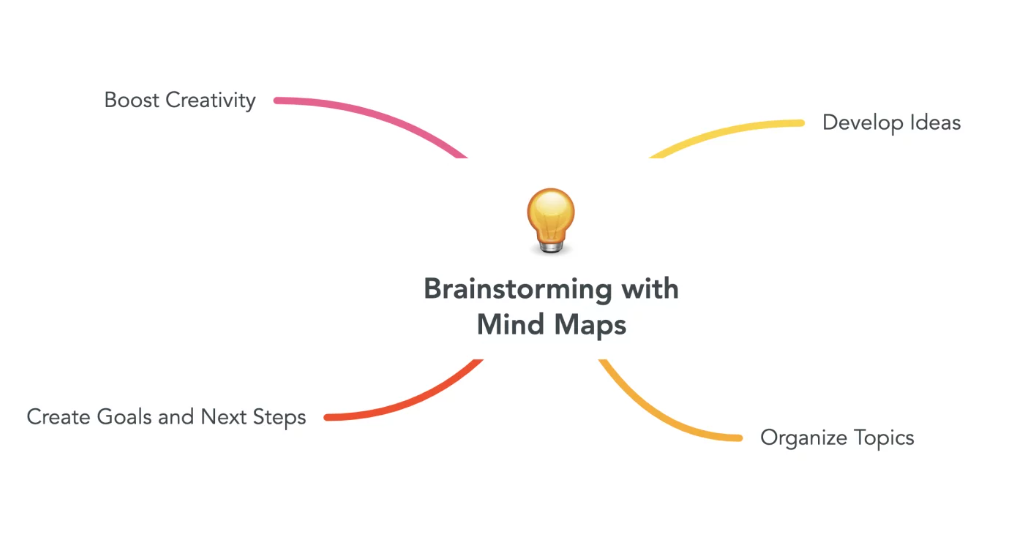
https://www.mindmaps.com/
3. Word Association: Write down a word related to your writing topic, then jot down any words that come to mind when you think of that word. This technique can help you uncover new ideas or perspectives.
4. Listing: Make a list of different aspects or elements related to your writing topic. This can include characters, settings, plot points, or themes. Use this list as a reference when brainstorming ideas for your writing.
5. Visual Inspiration: Look for visual prompts or images related to your writing topic. This could be photographs, artwork, or even scenes from movies or TV shows. Use these visuals as a starting point for brainstorming ideas.
6. Role Play: Imagine yourself as one of your characters or as a reader experiencing your writing. Put yourself in their shoes and think about what they would do, say, or feel in different situations. This technique can help you develop more authentic and relatable characters or storylines.
7. Questioning: Ask yourself questions related to your writing topic, such as "What if?" or "Why?" This can help you dig deeper into your ideas and explore different possibilities.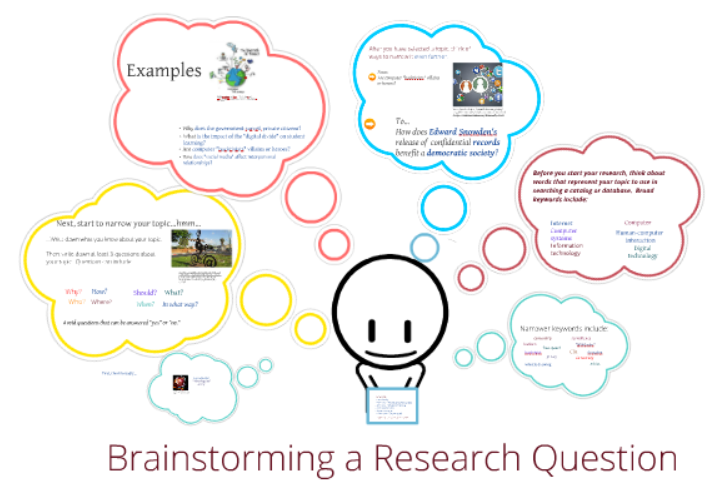
https://prezi.com/
8. Reading and Research: Read books, articles, or other pieces of writing related to your topic. This can spark new ideas or give you a fresh perspective on your own writing.
9. Brainstorming with Others: If possible, gather a group of fellow writers or friends who are interested in your topic and brainstorm together. Hearing different perspectives and ideas can be inspiring and help you generate new insights.
10. Take Breaks: Sometimes, the best ideas come when you give your mind a break. Take short breaks during your writing process and engage in activities that relax or inspire you, like going for a walk, listening to music, or doing something creative.
Remember, the goal of brainstorming is to generate as many ideas as possible without judgment or evaluation. Once you have a list of ideas, you can then evaluate and refine them to fit your writing goals.
10 Brainstorming Methods for Teaching
Brainstorming is also a valuable technique for generating ideas and strategies for teaching. Here are some brainstorming methods specifically for teaching.
1. Mind Mapping: Start with a central topic or concept related to teaching, and create branches with different aspects, subtopics, or teaching methods. This visual representation can help you explore different teaching approaches and connections.
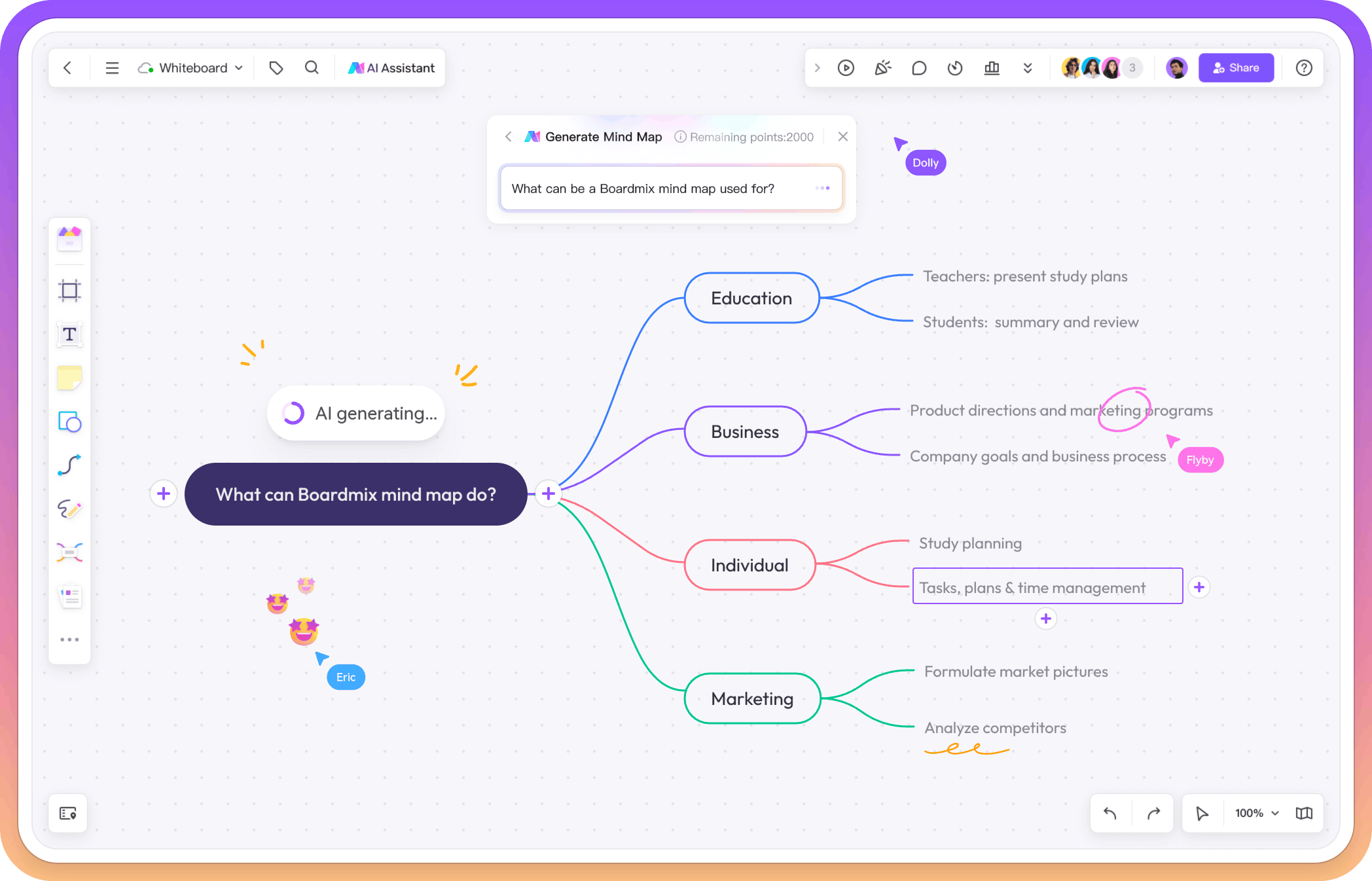
2. Listing: Make a list of different teaching techniques, activities, or resources that you already know or have used before. This can include strategies for engaging students, assessment methods, or technology tools. Use this list as a reference when brainstorming new ideas for teaching.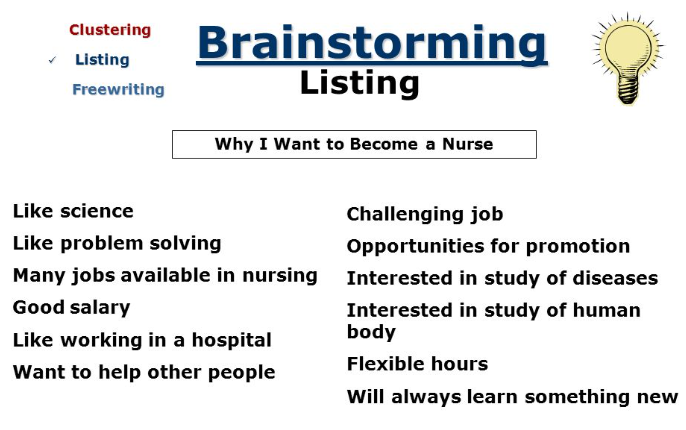
https://slideplayer.com/
3. Collaborative Brainstorming: Gather a group of fellow teachers or educators and brainstorm together. Share ideas, experiences, and challenges related to teaching. This collaborative approach can help generate fresh insights and innovative teaching methods.
4. Reflective Thinking: Take some time to reflect on your own teaching experiences and identify areas where you want to improve or try something new. Ask yourself questions like "What worked well in my previous lessons?" or "What can I do differently to enhance student engagement?"
5. Observation and Research: Observe other teachers in action, either in person or through videos, and take note of their teaching techniques or strategies that you find effective. Additionally, research teaching methodologies, educational theories, or the latest trends in education to gather inspiration and new ideas.
6. Professional Development: Attend workshops, conferences, or webinars related to teaching. These professional development opportunities can provide exposure to new teaching methods, best practices, and innovative approaches used by other educators.
7. Feedback from Students: Engage in open conversations with your students and ask for their input and feedback on your teaching methods. They may offer valuable insights or suggestions for improvement.
8. Peer Collaboration: Collaborate with other teachers or join online communities or forums where you can exchange ideas, share experiences, and seek advice from fellow educators. These interactions can spark creativity and help you discover new teaching techniques.
9. Adaptation from Other Subjects or Fields: Explore teaching strategies used in other subjects or even outside of education. For example, you can borrow techniques from art, music, sports, or business and adapt them to your own teaching context.
10. Trial and Error: Be willing to experiment with new teaching methods and techniques in your classroom. Take note of what works well and what needs improvement, and make adjustments accordingly.
Remember, brainstorming is a creative process that encourages thinking outside the box and exploring new possibilities. Don't be afraid to take risks and try out unconventional ideas in your teaching practice. Happy brainstorming!
10 Brainstorming Methods for Student
Brainstorming methods for students can be a great way to foster creativity, collaboration, and critical thinking skills. Here are some brainstorming methods specifically tailored for students.
1. Mind Mapping: Encourage students to create visual mind maps by starting with a central topic or idea and branching out with related concepts, keywords, and connections. This technique helps students organize their thoughts and generate new ideas.
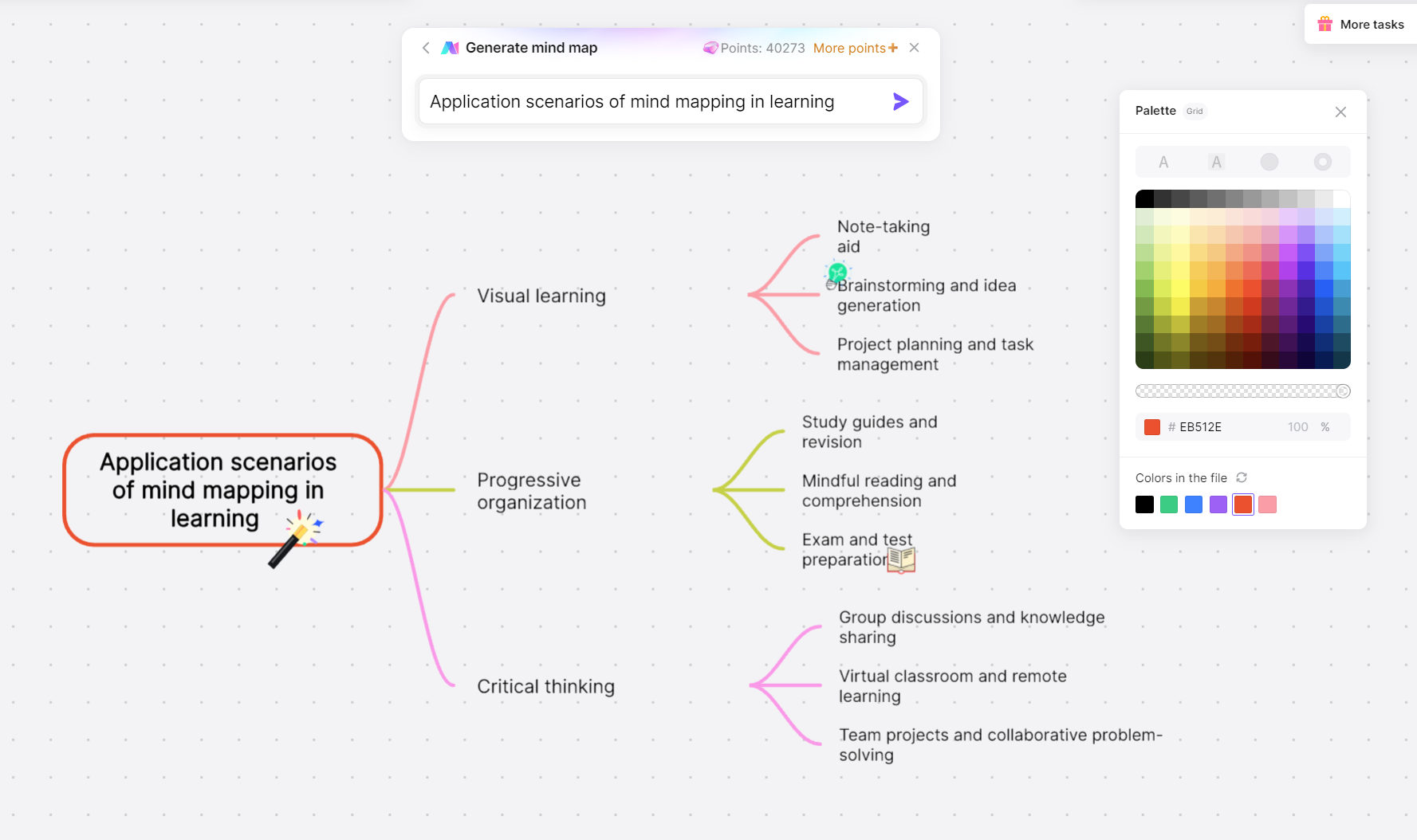
2. Round Robin: Divide students into small groups and provide them with a topic or problem to brainstorm. Each student takes turns sharing one idea at a time, going around the group until all ideas are exhausted. This method ensures equal participation and encourages diverse perspectives.
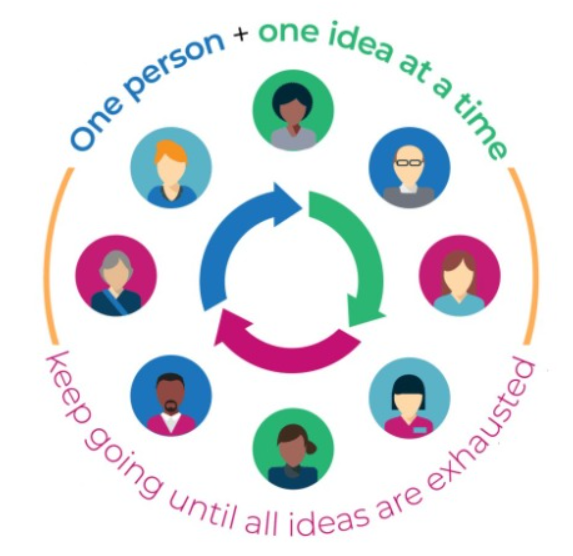
3. Silent Brainstorming: Give each student a stack of sticky notes and ask them to write down their ideas silently. After a set amount of time, have students stick their ideas on a whiteboard or wall. This allows for individual thinking and prevents the dominance of certain voices in the group.
4. Brainwriting: Provide each student with a sheet of paper and ask them to write down their ideas on a specific topic. After a few minutes, have students pass their papers to the person next to them, who will read the ideas and build on them. This process continues until the papers make a full circle, allowing for idea expansion and collaboration.
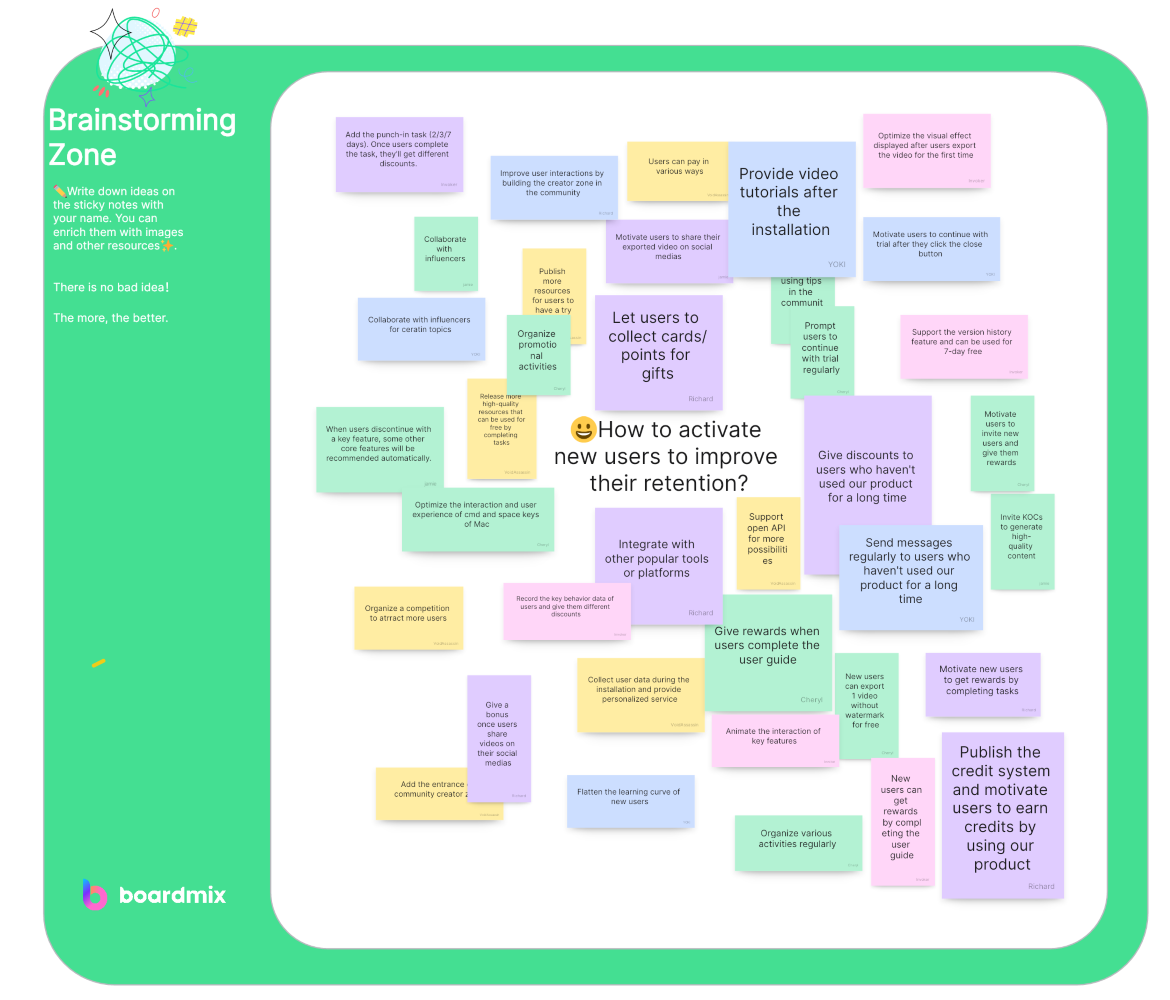
5. SCAMPER Technique: Introduce the SCAMPER method to students, which stands for Substitute, Combine, Adapt, Modify, Put to another use, Eliminate, and Rearrange. Students can use this technique to creatively brainstorm new ideas by applying these different perspectives to existing concepts or problems.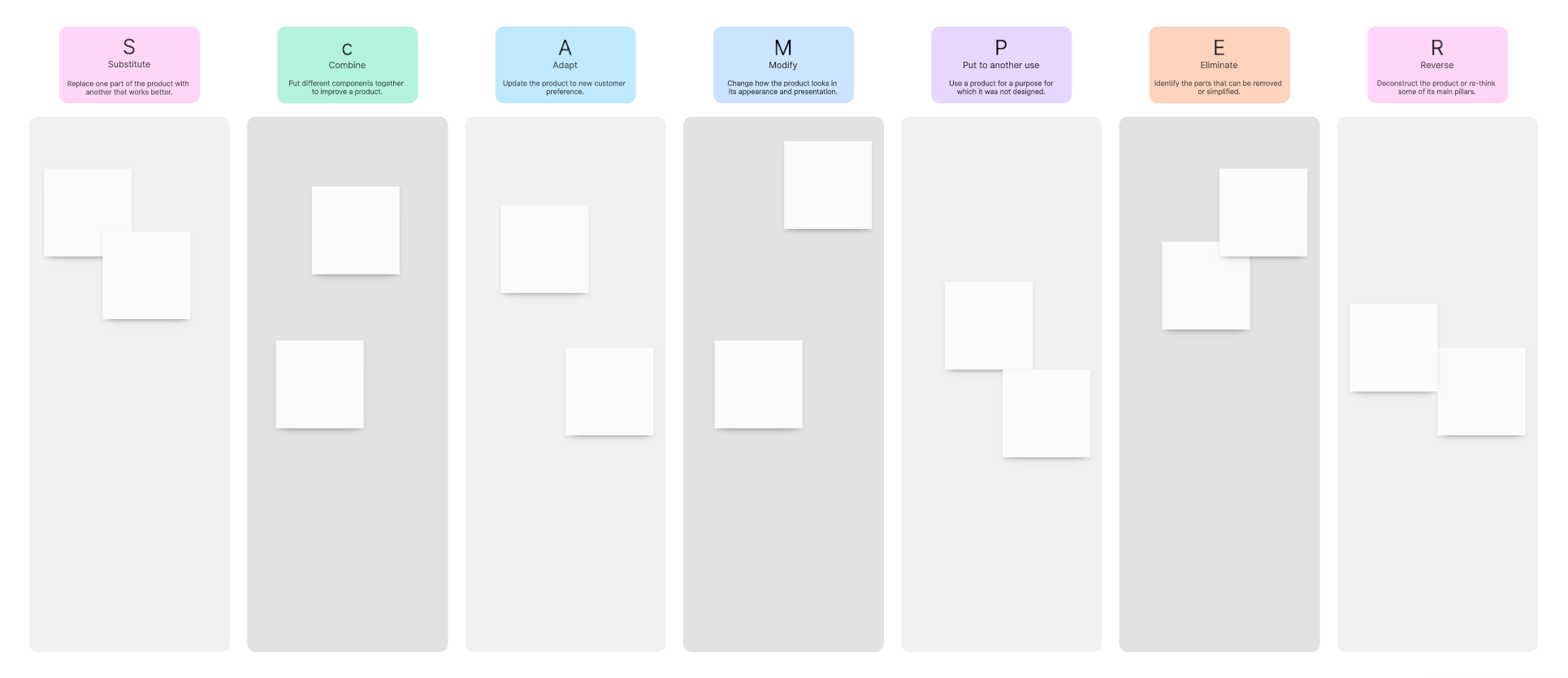 6. Role Play: Assign each student a different role or perspective related to the topic being brainstormed. This could include a scientist, an artist, a historian, or even a fictional character. Students then brainstorm ideas from their assigned perspective, providing unique insights and creative solutions.
6. Role Play: Assign each student a different role or perspective related to the topic being brainstormed. This could include a scientist, an artist, a historian, or even a fictional character. Students then brainstorm ideas from their assigned perspective, providing unique insights and creative solutions.
7. Gallery Walk: Display different prompts or questions around the classroom and allow students to walk around and write down their ideas on each prompt. This method encourages movement, collaboration, and the exploration of multiple topics or problems simultaneously.
8. Online Collaborative Tools: Utilize online platforms or tools that allow for real-time collaboration and brainstorming. Students can contribute their ideas through shared documents, discussion boards, or collaborative whiteboards. This method facilitates remote learning and encourages virtual collaboration.
9. Storyboarding: Have students create storyboards or visual narratives related to the topic or problem being brainstormed. This technique combines visual thinking with storytelling, allowing students to generate ideas sequentially and creatively.
10. Outdoor Brainstorming: Take students outside the classroom and encourage them to brainstorm in a natural environment. This change of scenery can stimulate creativity and inspire new ideas.
Remember to create a safe and non-judgmental environment where all ideas are valued during the brainstorming process. Encourage students to think critically, take risks, and build upon each other's ideas. Brainstorming methods for students should promote active engagement, collaboration, and exploration of diverse perspectives.
10 Brainstorming Methods for Business
Brainstorming methods for business can be a valuable tool for generating innovative ideas, fostering collaboration, and problem-solving. Here are some effective brainstorming methods specifically tailored for businesses.
1. Brainwriting: Similar to the method mentioned earlier, brainwriting involves providing each team member with a sheet of paper and asking them to write down their ideas on a specific topic. After a few minutes, have team members pass their papers to the person next to them, who will read the ideas and build on them. This process continues until the papers make a full circle, allowing for idea expansion and collaboration.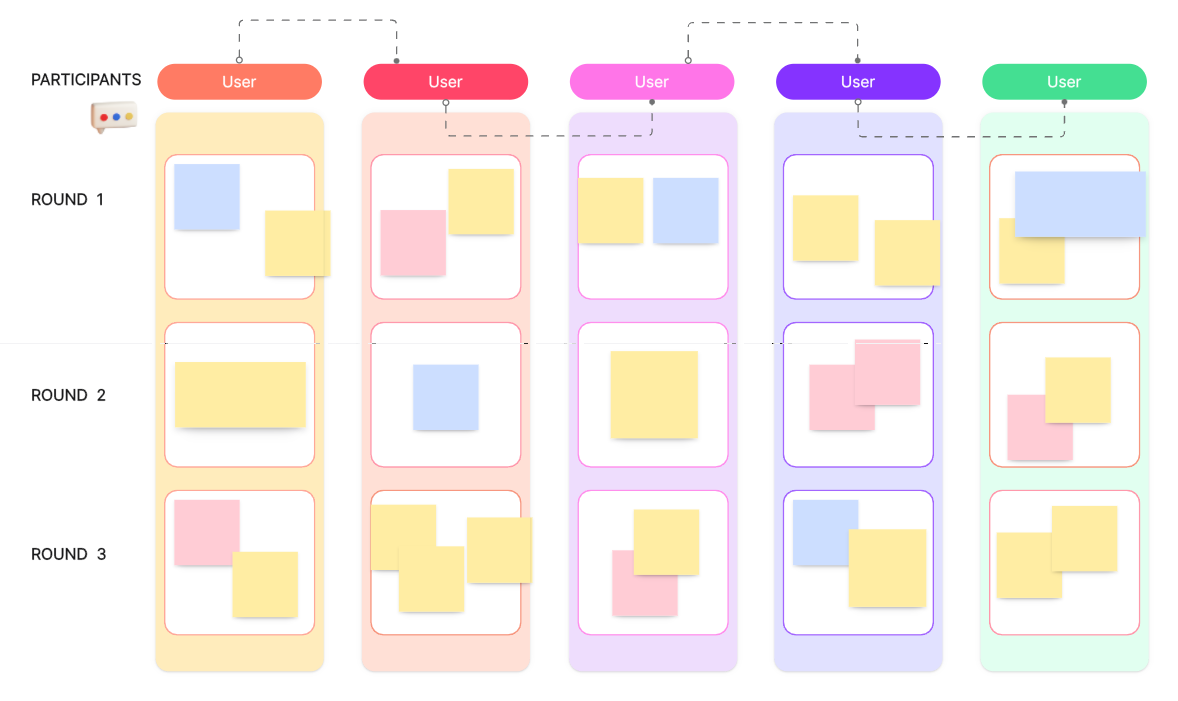 2. SWOT Analysis: Conduct a SWOT (Strengths, Weaknesses, Opportunities, Threats) analysis with your team to identify and evaluate internal and external factors that can impact your business. This method helps identify potential areas for improvement and highlights growth opportunities.
2. SWOT Analysis: Conduct a SWOT (Strengths, Weaknesses, Opportunities, Threats) analysis with your team to identify and evaluate internal and external factors that can impact your business. This method helps identify potential areas for improvement and highlights growth opportunities.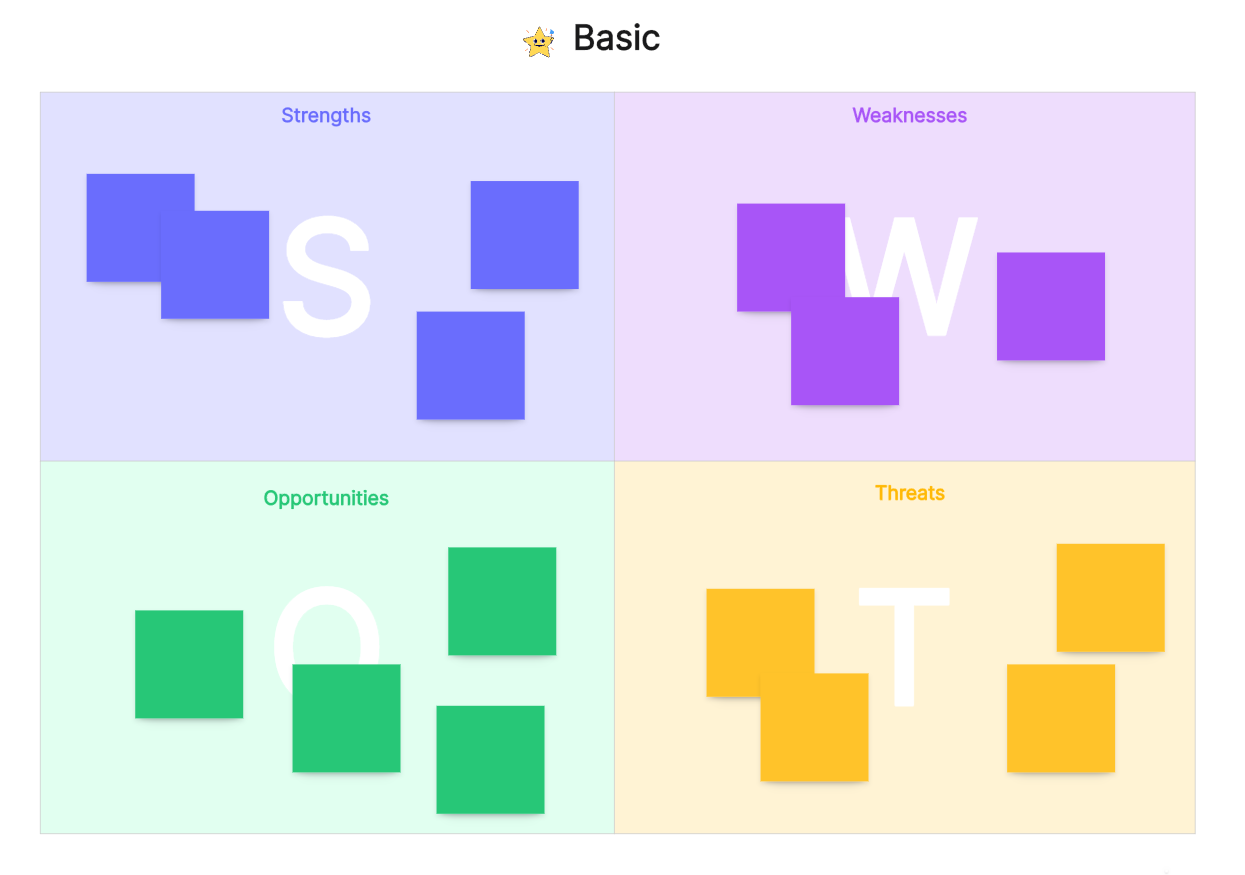 3. Six Thinking Hats: Developed by Edward de Bono, the Six Thinking Hats method encourages participants to think from different perspectives. Assign each team member a different colored hat that represents a specific thinking style (e.g., creative, analytical, emotional). This technique helps break out of traditional thinking patterns and stimulates creativity.
3. Six Thinking Hats: Developed by Edward de Bono, the Six Thinking Hats method encourages participants to think from different perspectives. Assign each team member a different colored hat that represents a specific thinking style (e.g., creative, analytical, emotional). This technique helps break out of traditional thinking patterns and stimulates creativity.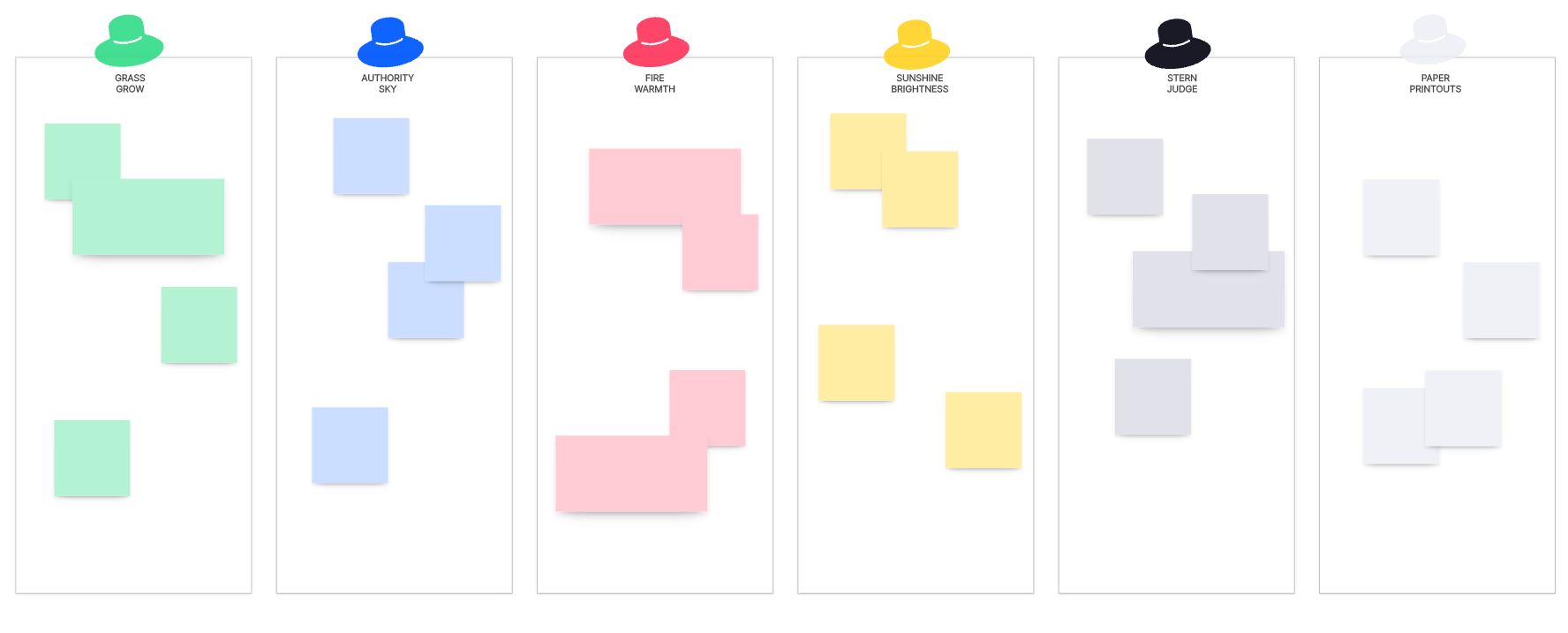
4. SCAMPER Technique: Just like in the student brainstorming methods, the SCAMPER technique can be used by businesses as well. SCAMPER stands for Substitute, Combine, Adapt, Modify, Put to another use, Eliminate, and Rearrange. By applying these different perspectives to existing products, services, or processes, businesses can generate new ideas and identify areas for improvement.
5. Role Play: Similar to the student method, assign each team member a different role or perspective related to the topic being brainstormed. This could include a customer, competitor, or industry expert. Team members then brainstorm ideas from their assigned perspective, providing unique insights and creative solutions.
6. Mind Mapping: Utilize mind mapping software or physical whiteboards to visually organize ideas and their connections. Start with a central topic or problem and branch out with related concepts and potential solutions. This technique helps teams see the bigger picture and encourages non-linear thinking.
7. Nominal Group Technique: This method involves individuals brainstorming individually and then sharing their ideas in a group setting. Each person presents their ideas without discussion or judgment. After all ideas have been shared, they are compiled and evaluated as a group. This approach ensures equal participation and reduces the influence of dominant voices.
8. Reverse Brainstorming: Instead of focusing on generating ideas, reverse brainstorming involves identifying potential problems or obstacles associated with a particular topic or goal. Once these problems are identified, teams can then brainstorm solutions or strategies to overcome them.
9. Design Thinking: Embrace the principles of design thinking by adopting a human-centered approach to problem-solving. Encourage empathy, collaboration, and experimentation to generate innovative ideas and solutions.
10. Gamified Brainstorming: Turn brainstorming into a game by introducing competition or rewards. Set clear objectives and rules and encourage teams to think outside the box to win the game. This method adds an element of fun and can help stimulate creativity.
Creating a safe and inclusive environment is essential during the brainstorming process in business settings. Please encourage open communication, active listening, and respectful feedback to foster creativity and collaboration.








